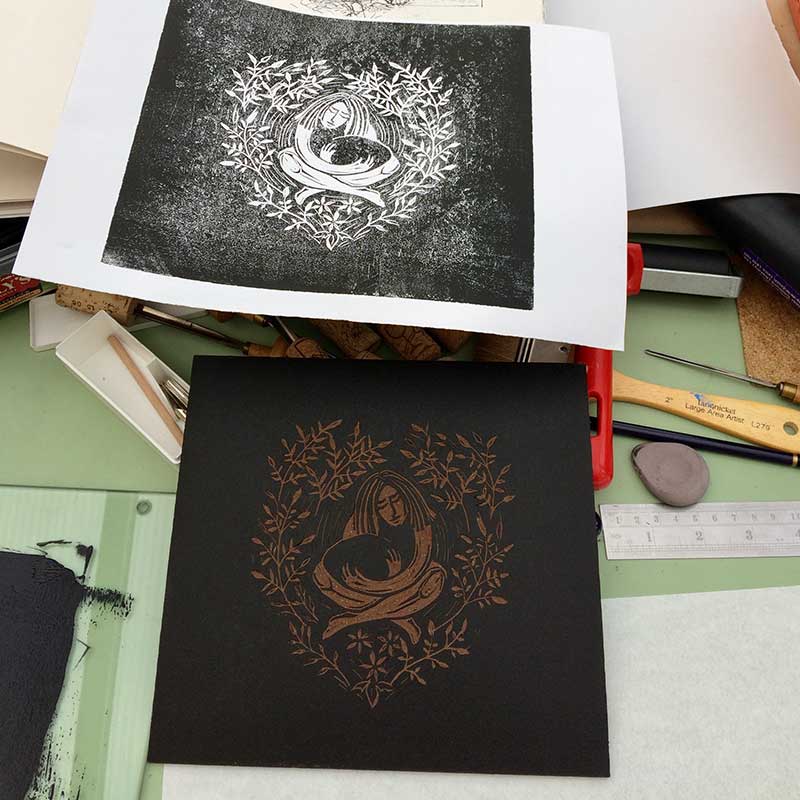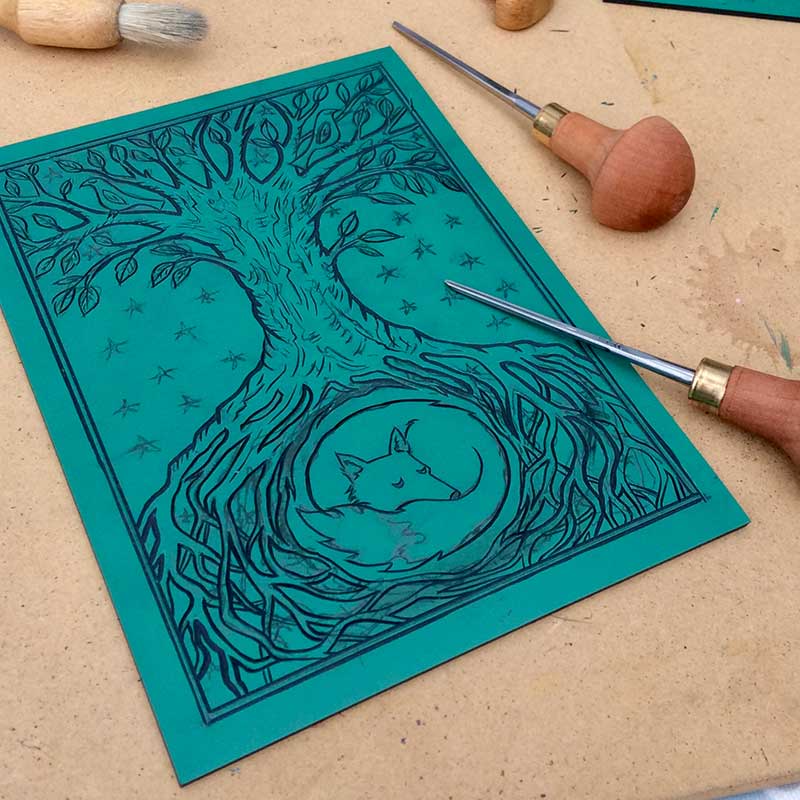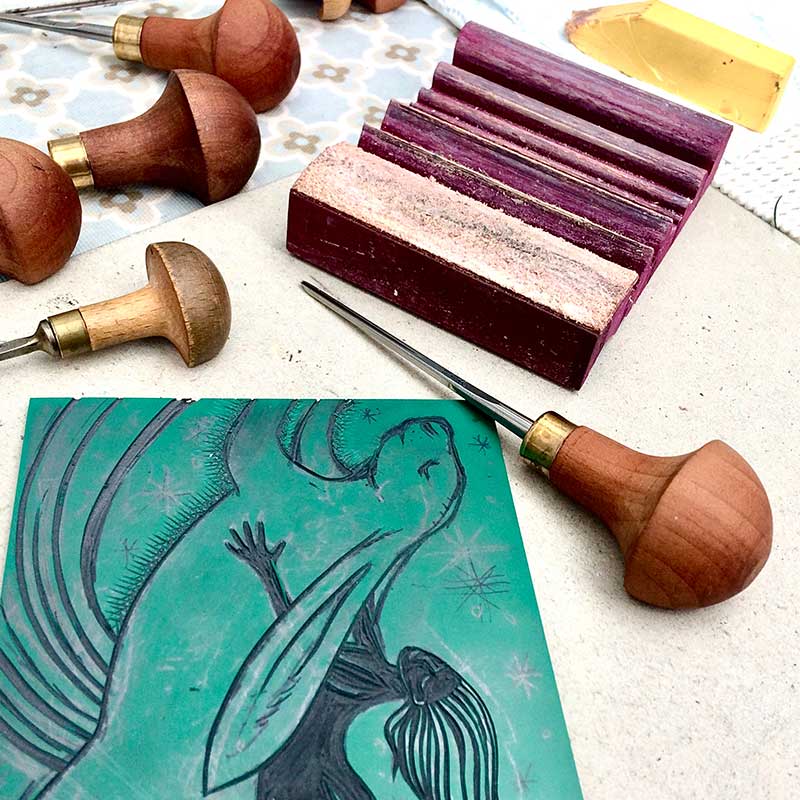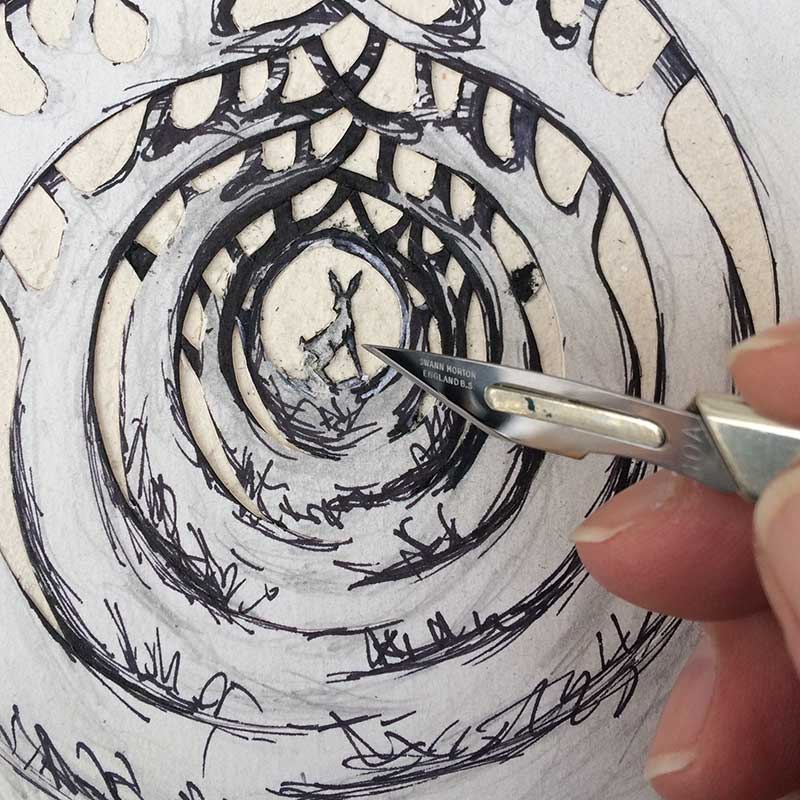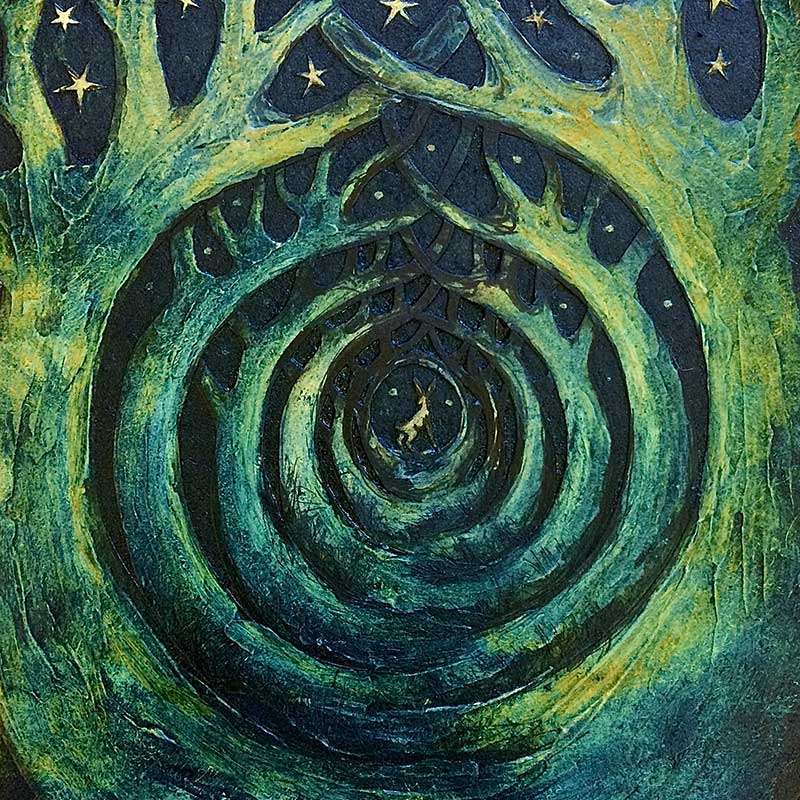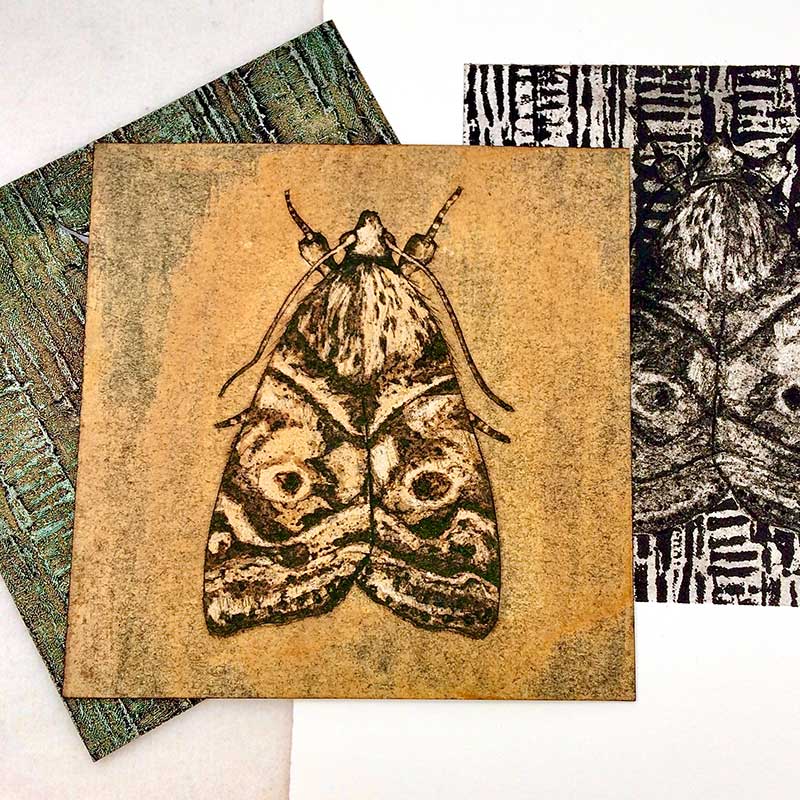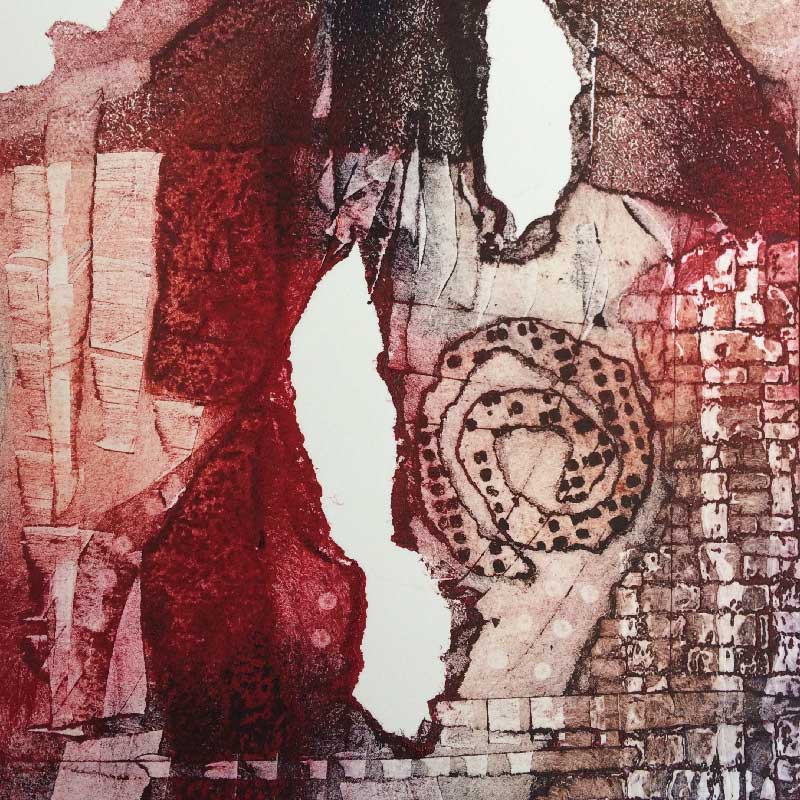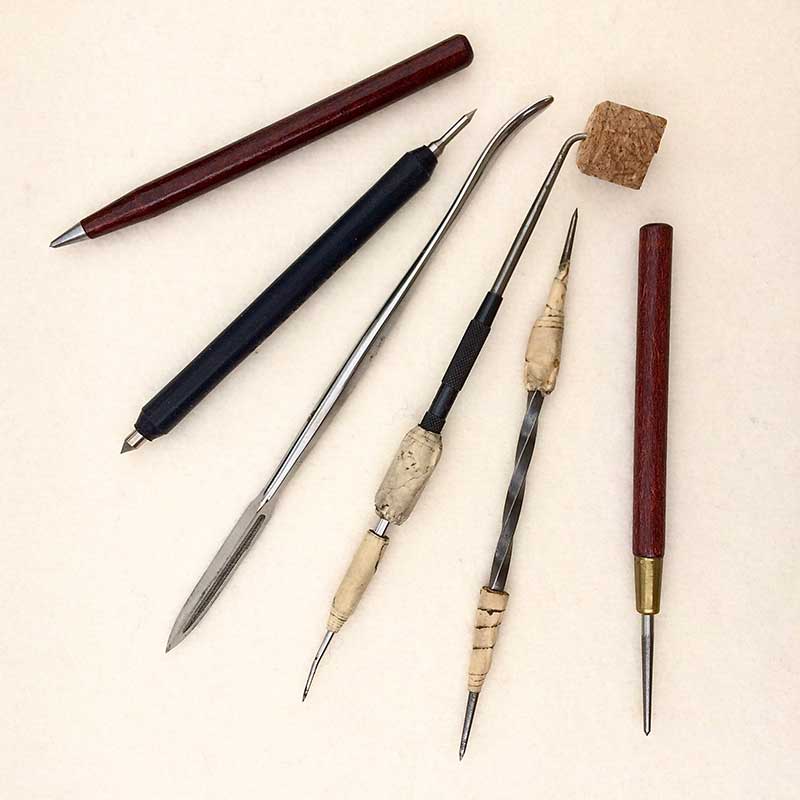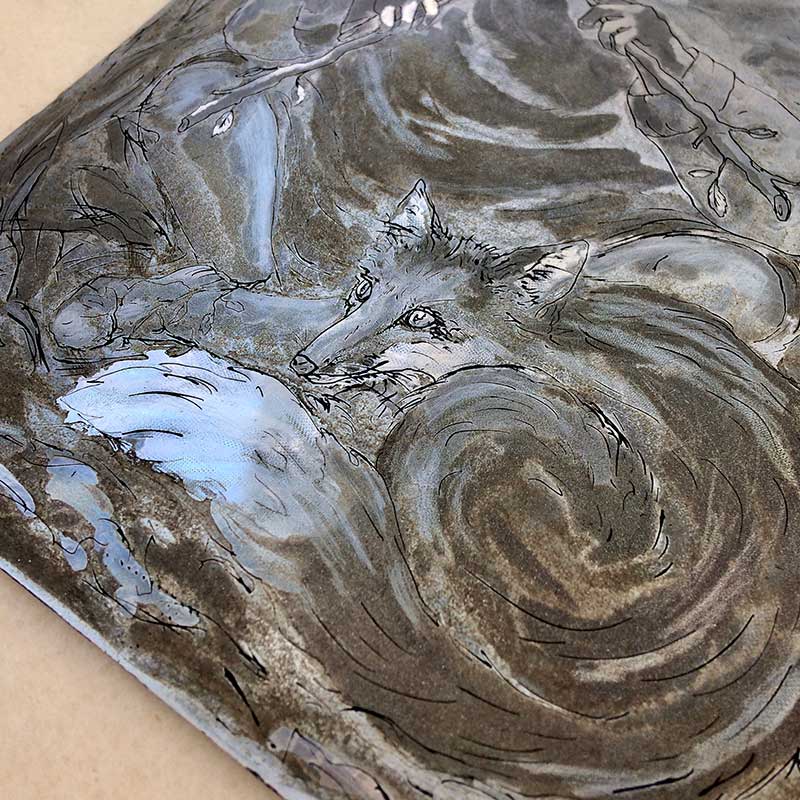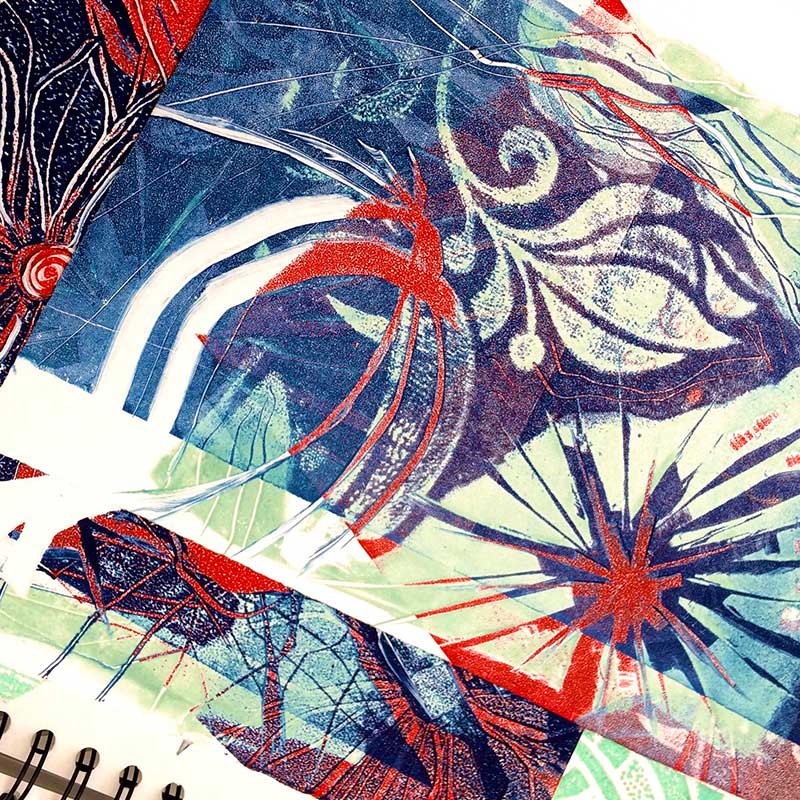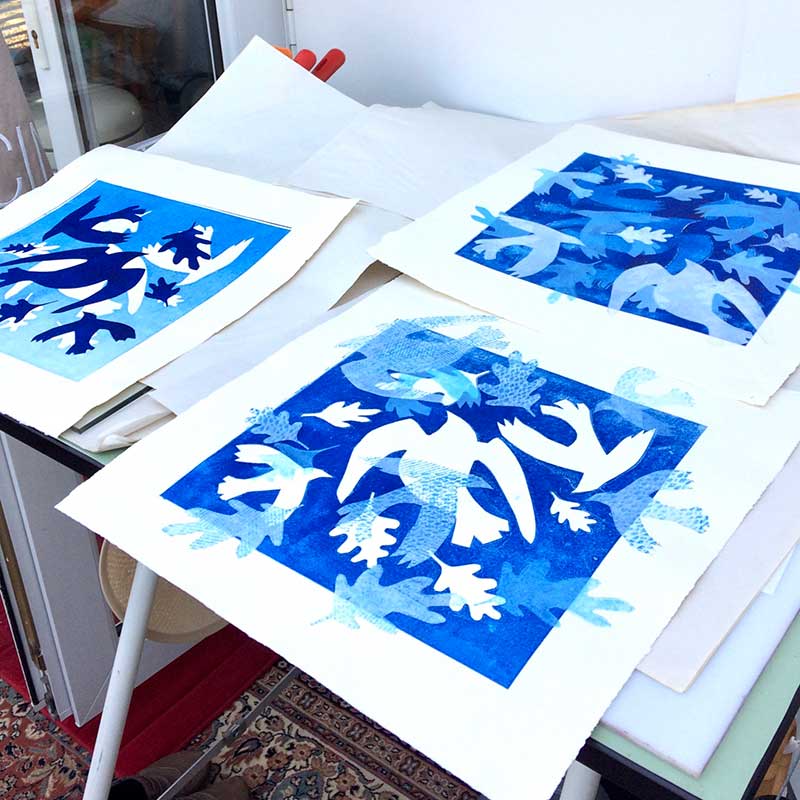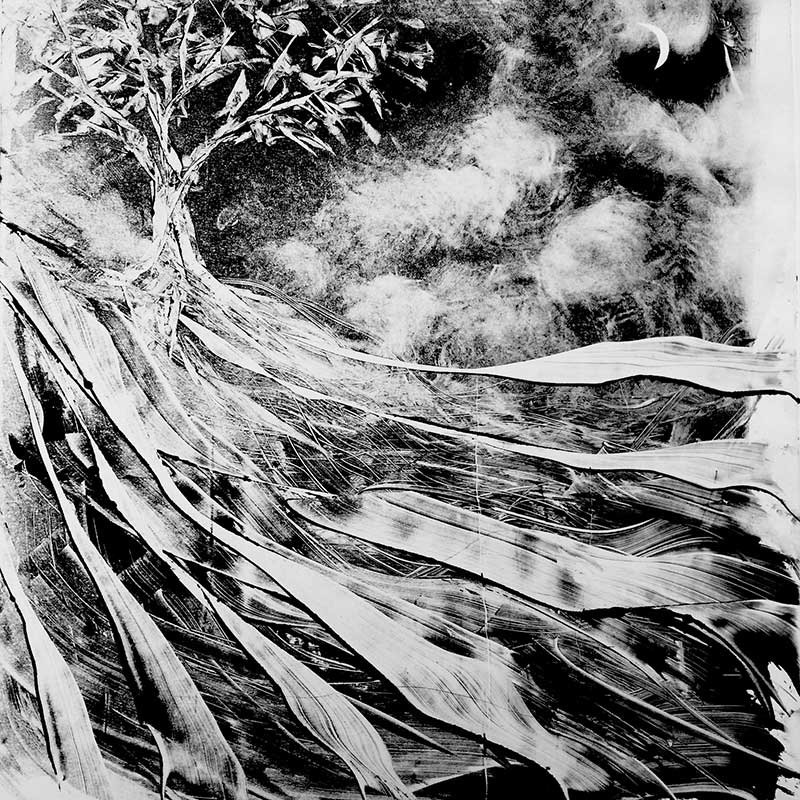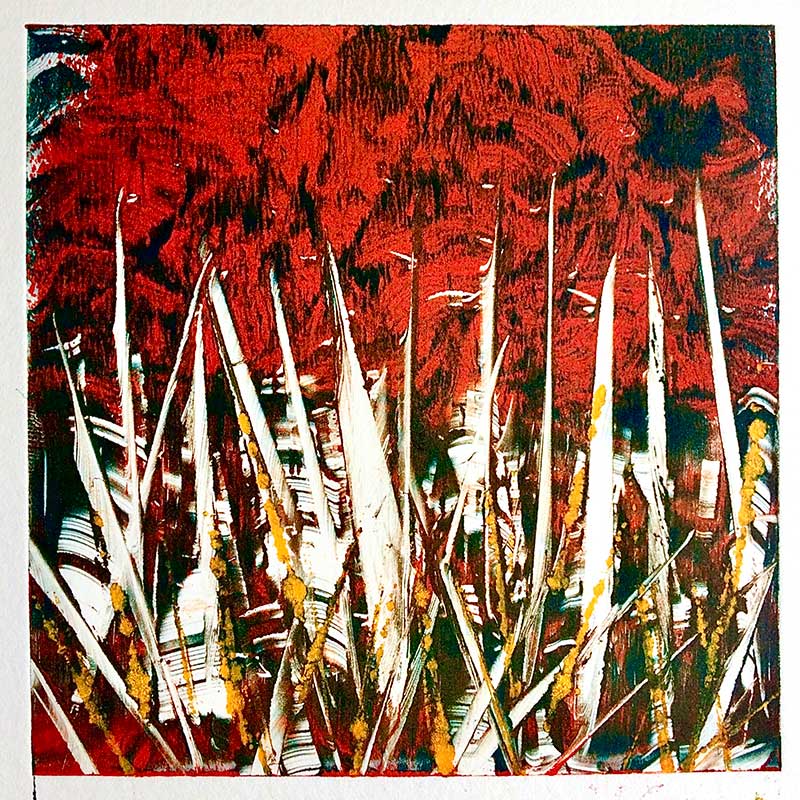The Printmaking Process
The art of printmaking is all about 'the process'. There are many different ways of making an original print, but all involve the transference of an image from one surface to another. The steps and stages involved with each technique differ, some time consuming and complex, some swift and immediate. Whichever process is followed, the results are always, unfailingly fascinating. The marks produced from printmaking are like no other; rich, unexpected and textural, and the anticipation of the 'reveal', as a print is pulled from a plate, is something which never tires.
Intaglio Printmaking
In this process, a printing plate is made from various materials; metals, plastic, or even card. The surface of the plate is inscribed with lines, marks and cuts, leaving the design below the surface of the plate. Ink is applied by various means which forces it into the incised lines. When placed under pressure using a press, the inked lines are transferred to the printing paper. Etchings and wood engravings are examples of this process.
Relief Printmaking
With a relief print the design is formed by the raised surface of the printing block or plate. Areas below the surface are cut away so that only the upper surface of the block forms the design. Ink is applied to this upper surface and the block can then be printed. Linocuts are an example of this technique.
Linocuts
Linocut printmaking is probably the form of printmaking that people are most familiar with. Sometimes called block printing, relief printing or just lino printing, the process can be as simple as carving a design into the lino's surface, applying ink with a brayer (roller) which is then transferred onto paper (or other surface) by applying pressure, to produce linocut prints.
More complicated lino printing techniques can involve cutting separate 'blocks' to create images with multiple colours. The 'reduction printing' method involves cutting areas away from an individual plate layer by layer, the plate being inked up separately between each printing.
Different cutting tools make different marks upon the surface and inks can be applied in various ways. There are several types of 'Lino' available for printmaking, each a little different in their qualities. Lino printing can be versatile, strong, bold and graphic or subtle and even painterly in its effects and is often used on its own or in combination with other techniques to great effect.
Collagraphs
Collagraphs can be created in so many different ways and from so many materials. Collagraph prints are often created in the manner of a collage, glueing and layering different elements to construct a textured printing surface usually on a firm card substrate. Lines and marks can be incised into the surface, areas and layers are cut away or built up to give defined surface levels which will create different tonal values when printed.
Glues and varnishes can also be applied to the surface to create different tonal areas in the manner of a resist before the plate is finally coated and sealed.
The sealed plate is then inked and wiped carefully by hand. Care has to be taken during the inking process, particularly where there are small and delicate elements to the design as the plate can become quite fragile and so may not withstand too many inkings and pressings.
Whilst usually printed in the intaglio method through the use of a press, there is also the possibility of printing the plate in the relief method. This crossover of printing techniques can give exciting results.
Etchings
There are many different processes to create etchings. Some, but not all, use metal plates which have been polished to a very smooth finish and coated with a special wax ground. A design is scratched into the wax using an etching needle or 'scribe'. When the design is finished the plate is placed into an acidic solution which 'bites' into the scratched marks leaving etched lines in the surface of the metal plate. The longer the plate is left in the solution, the deeper the line is etched.
After cleaning, the plate is inked carefully so that it settles into the engraved lines of the design. After wiping away excess ink from the surface the plate and dampened printing paper are rolled through an etching press as significant pressure is required to force the paper surface into the fine etched lines of the plate in order to print the image.
Aquatint etching is a similar but more complex process in that the plate is etched in 'layers' and uses 'stopping out' varnishes and burnishing techniques using special tools to achieve a plate that has tonal effects.
Monoprints
The term 'Monoprint' is used to describe a one of a kind printed image. Monoprints are essentially individual prints that have been printed from a matrix of sorts; be it a plate, a block or a stencil, which can be re-inked if desired as a repeatable image. Different elements can be introduced to the inked plate to create an endless variety of new and individually unique printed images. Simple and complex shapes, organic materials, stencils, cut and torn paper, can be inked and pressed to give beautiful effects.
A monotype as opposed to a monoprint is by definition a print of which there is only ever one of. Ink or paint is applied to a (usually) smooth surface and the ink is worked into and wiped or removed to create an image which is then rolled through the press and by doing so the ink is transferred to the printing surface. As there is no repeatable matrix there can only be one true printed copy made.
By developing the image much as you would a painting or a drawing, then beautiful and expressive painterly effects can be achieved.
